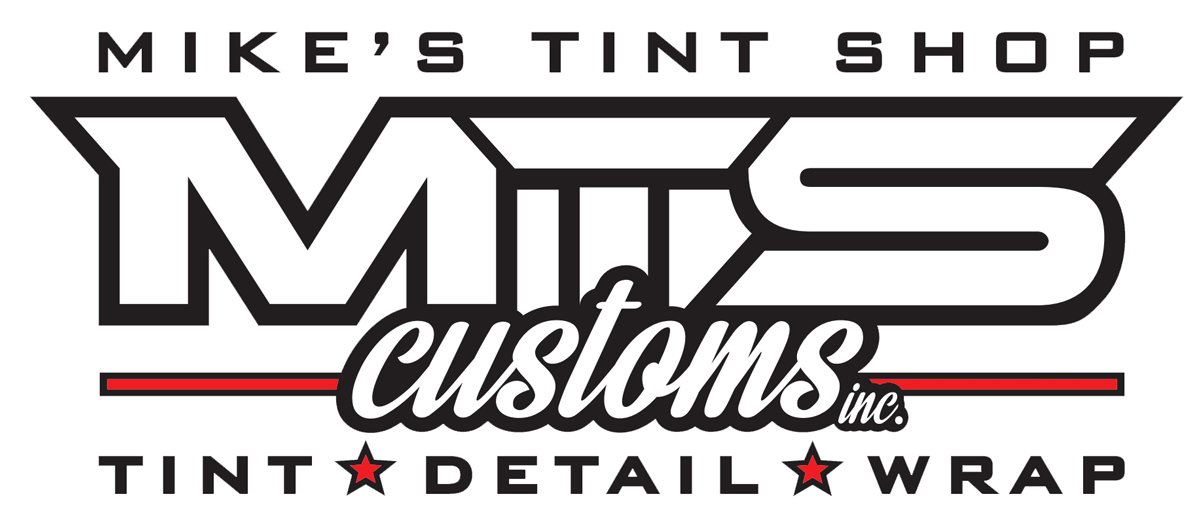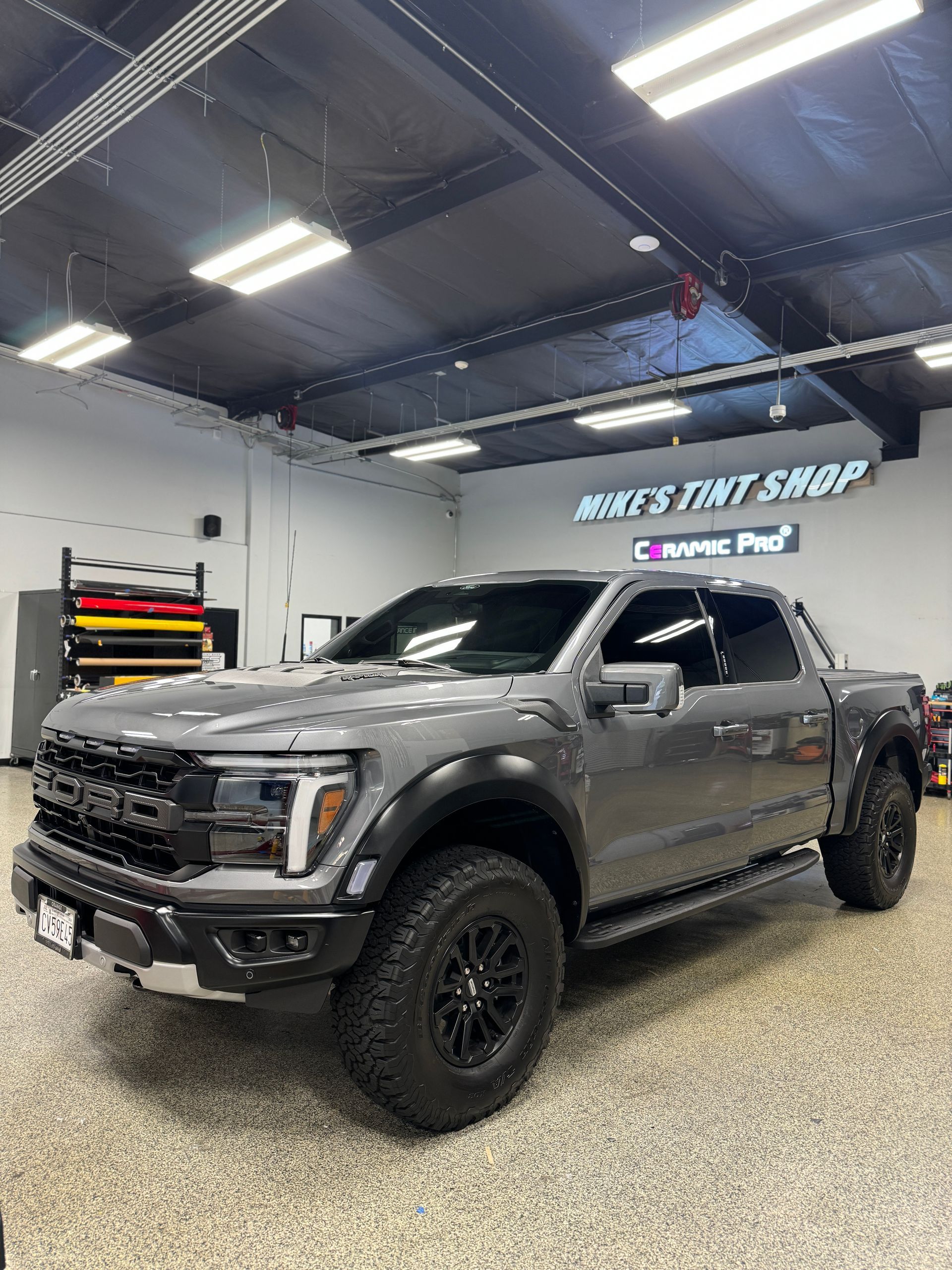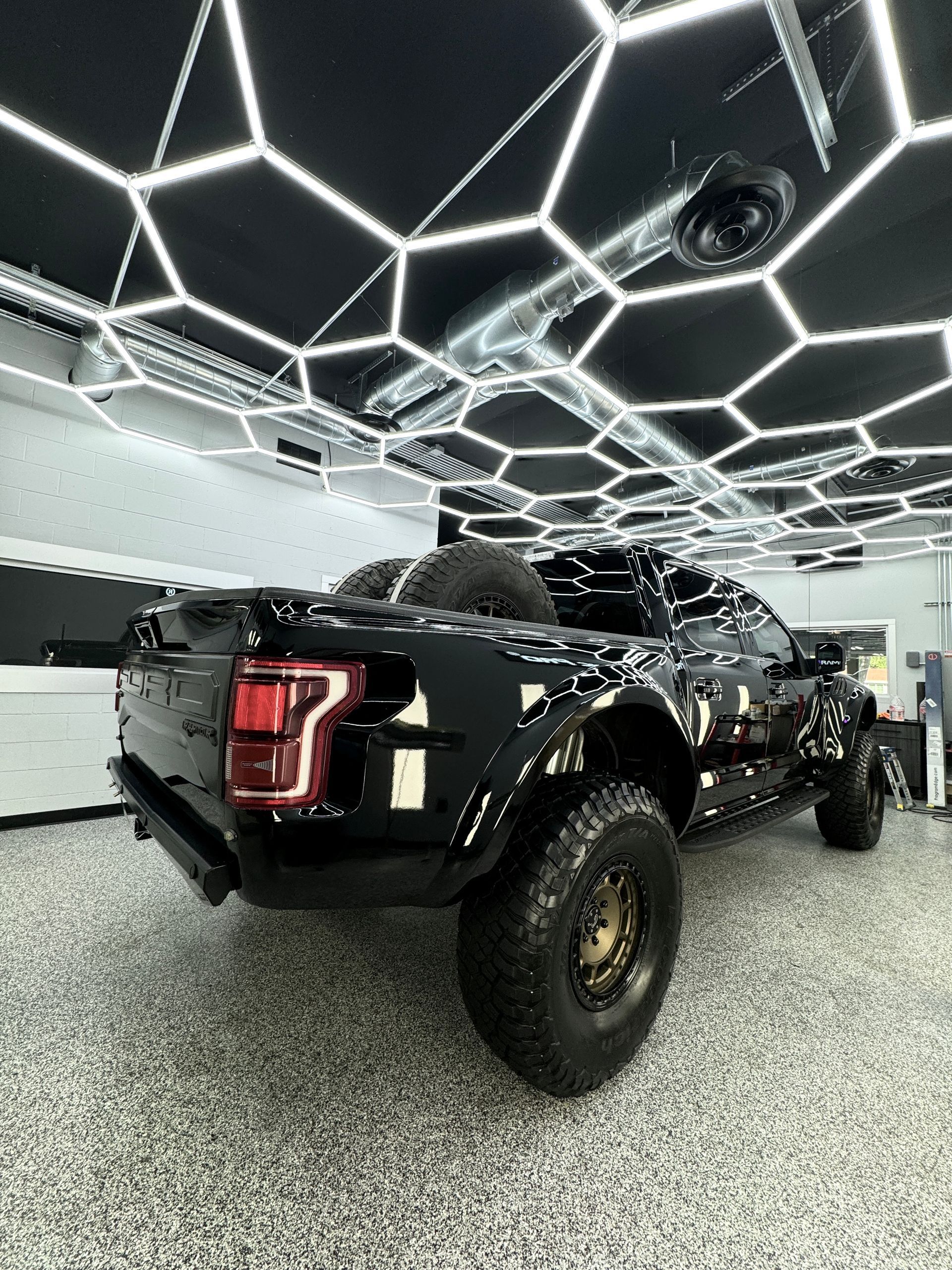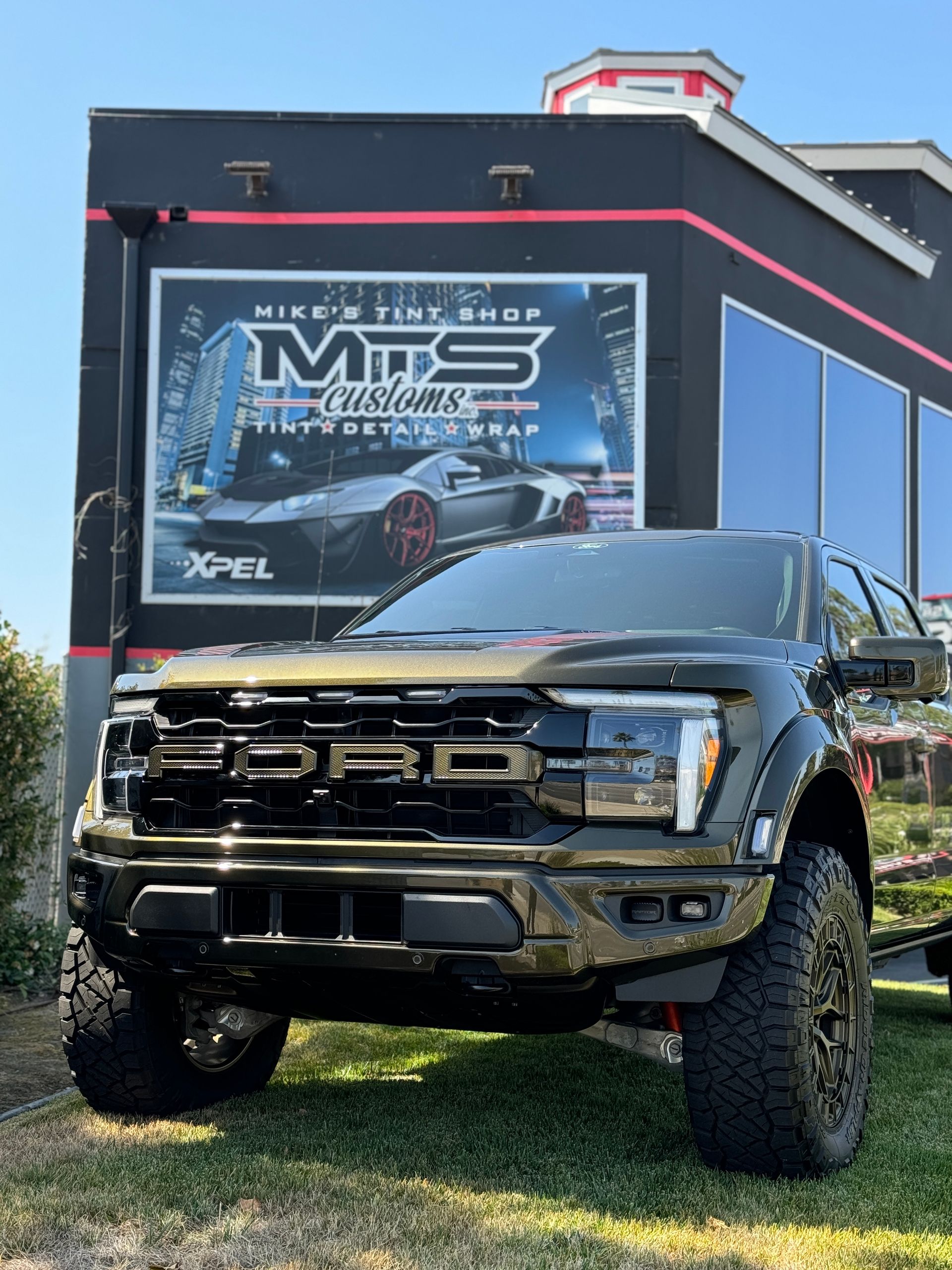5 STAR QUALITY SERVICE
Modern PPF Technology: Breaking Down UV Inhibitors and Their Applications
When it comes to protecting your vehicle, many of us hope for a magic shield against the sun's harsh rays, dirt, and accidental dings. Well, what if I told you that such a solution exists right in front of you? Paint Protection Film (PPF) offers an innovative way to keep your car looking like new while saving you money in the long run. More than just a shiny layer on top, modern PPF is equipped with advanced UV inhibitors that work hard to fend off fading and wear. Let’s dive into how these remarkable technologies can enhance your vehicle's appearance and contribute to its lasting value.
UV inhibitors in modern
Paint Protection Film (PPF) technology serve as a protective barrier that blocks up to 99% of harmful ultraviolet radiation, preventing paint fading and maintaining clarity over time. These advanced features not only enhance the vehicle's aesthetic appeal but also contribute to its resale value by preserving its original finish.

UV Inhibitors in Modern PPF
UV inhibitors are not just an add-on; they are a fundamental part of modern Paint Protection Film (PPF). These specialized substances actively absorb or reflect harmful ultraviolet (UV) radiation, acting as a protective shield against sun damage. Think of it like sunscreen for your car—without it, the paint could fade, chip, or deteriorate over time.
When picking a Paint Protection Film, choose ones that mention they have strong UV blockers like benzotriazole and hindered amine light stabilizers (HALS). These compounds work by blocking up to 99% of UV radiation, creating a substantial barrier that allows your vehicle’s finish to remain vibrant and intact. Just imagine leaving your car parked outside in the blazing sun day after day: without this protective layer, you'd be inviting serious damage.
As studies suggest, a vehicle without UV protection can experience dramatic paint degradation within just five years of constant exposure to sunlight. Conversely, vehicles treated with PPF featuring these state-of-the-art UV inhibitors show significant improvements in maintaining their original paint color and gloss. According to research, vehicles with UV-inhibited PPF maintain their aesthetic appeal 40% more effectively compared to their untreated counterparts.
Understanding the vital role UV inhibitors play begs the question: how long can you expect them to last? The answer is quite impressive.
The longevity of UV Inhibitors
Generally speaking, PPF equipped with high-quality UV inhibitors tend to last anywhere from 5 to 10 years longer than standard films lacking such robust protection. This durability translates not only into cosmetic benefits but also into significant cost savings over time. By preventing common issues such as color fading and clear coat deterioration, you’ll find yourself spending less on repainting and repairing—making the initial investment in PPF well worth it.
Moreover, advanced testing methods adhere to industry standards like ASTM G154, which simulates accelerated weathering and UV exposure. Results show films infused with these inhibitors outperform those without them by a staggering 30% regarding durability and effectiveness. With such numbers backing them up, it's clear that investing in PPF embedded with UV blockers means safeguarding your vehicle from the elements effectively.
Incorporating this technology isn't just for aesthetics; it's a proactive measure against long-term damage, ultimately enhancing resale value and maintaining that showroom-fresh appearance for many years.
By focusing on these protective qualities when selecting your Paint Protection Film, you’ll lay the groundwork for a comprehensive understanding of how various layers blend together to offer optimal protection for your vehicle.
Structural Layers of Protection
The foundation of modern Paint Protection Film (PPF) relies on its thoughtful design, which divides it into three distinct layers. Each layer serves its purpose in providing not only protection but also enhancing the vehicle's longevity and aesthetic appeal.
Layer I—Adhesive Layer
The adhesive layer is the unsung hero of PPF. Its primary role is to ensure secure bonding between the film and your vehicle's surface without causing any damage during application or removal. If the adhesive is too strong, it may pull away paint when removed; if it's too weak, it won’t adhere properly, leaving your car vulnerable to damage. A quality adhesive can make all the difference in maintaining your vehicle’s pristine condition while allowing for simple removal whenever needed.
This step is followed by the polymer layer, which plays an equally significant role.
Layer II - Polymer-Based Middle Layer
Comprising the bulk of the film, this polymer-based middle layer acts as a vital buffer against harsh environmental elements that vehicles face daily. It's designed to absorb impacts from debris like gravel or stones, ultimately preventing chips that can mar the paint beneath. Additionally, this middle layer is where impressive UV inhibitors are embedded. They work tirelessly to provide maximum protection against sun damage, blocking up to 99% of harmful ultraviolet rays that threaten your vehicle's finish and clarity over time.
Finally, we arrive at the top coat of protection.
Layer III - Top Coat with Self-Healing and Hydrophobic Properties
The top coat of PPF provides an extra layer of defense and integrates remarkable properties that enhance your driving experience. This is where self-healing capabilities come into play; minor damage simply disappear when exposed to heat from friction or sunlight. Imagine driving your car every day without worrying about those tiny scratches ruining its appearance! Moreover, this layer boasts hydrophobic properties that repel water, dirt, and grime—allowing them to bead off effortlessly rather than sticking stubbornly to the surface. This feature makes cleaning much easier and preserves that showroom finish longer.
| Layer | Function |
|---|---|
| Adhesive Layer | Secure bonding without paint damage |
| Polymer Layer | Absorbs impacts and integrates UV inhibitors |
| Top Coat | Self-healing and hydrophobic properties that repel dirt |
Together, these three layers create a formidable barrier that protects your investment while ensuring your vehicle looks stunning for years. This integration depicts how cutting-edge technology enhances both aesthetic appeal and functional performance in automotive care.
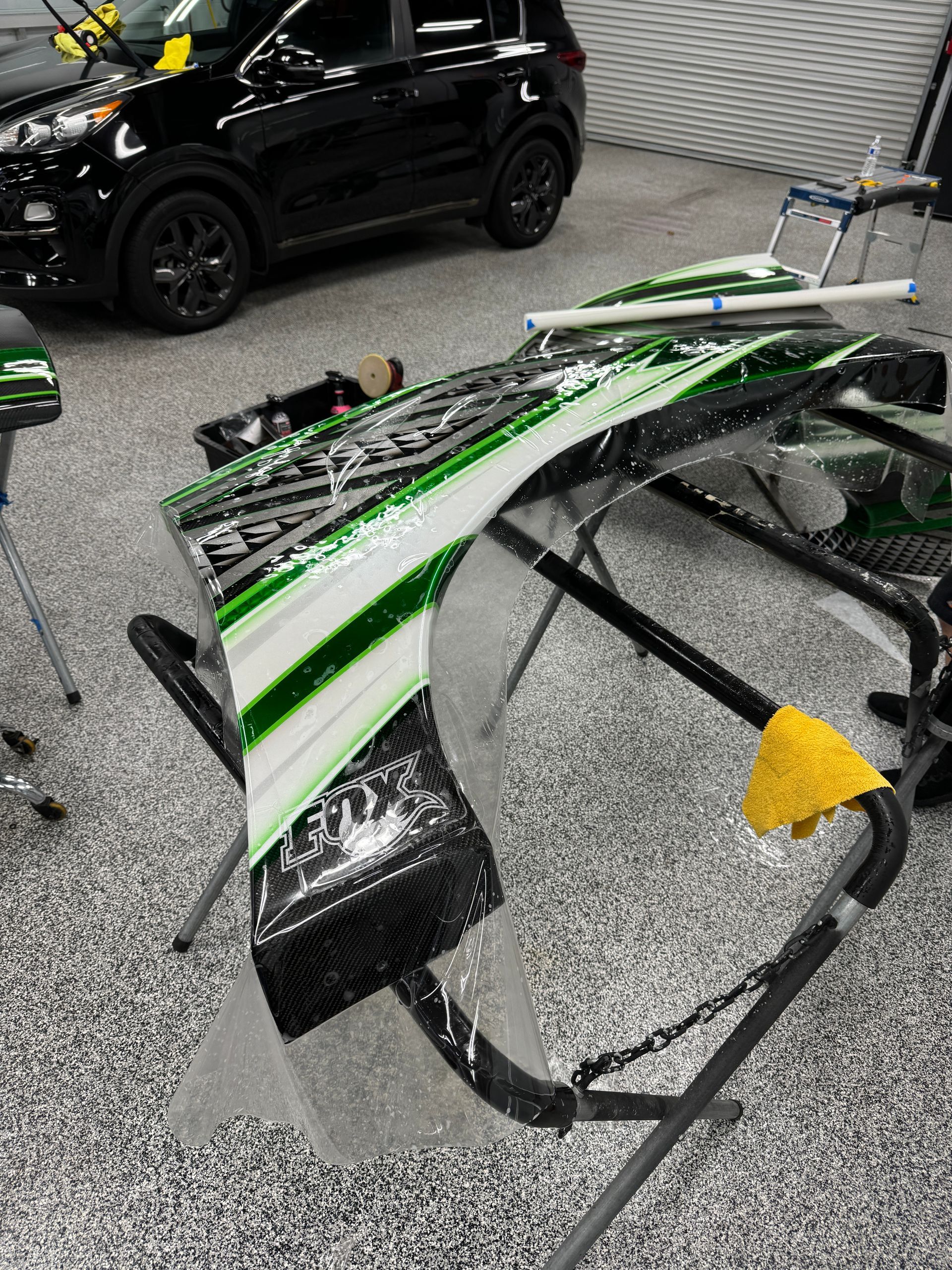
Advantages of UV Inhibitors
UV inhibitors are not just a mere add-on; they play a crucial role in protecting your vehicle’s integrity and aesthetics. Imagine driving a car that still looks as polished as the day you bought it—even after years of exposure to the elements. That dream becomes a reality when you install PPF with advanced UV inhibitors.
Paint Preservation
One of the most significant advantages of these protective treatments is their ability to preserve the original paint of your vehicle. By forming a barrier against ultraviolet rays, UV inhibitors help maintain your car’s color and gloss. This means that the vibrant hue you fell in love with at the dealership stays intact, enhancing your vehicle’s aesthetic appeal for years down the road. The result? Your car retains its showroom-fresh appearance and turns heads wherever it goes.
Prevent Fading
Over time, constant exposure to sunlight can lead to fading, making even the most luxurious paint jobs look dull and lifeless. UV rays are notorious for accelerating this deterioration process, but with UV inhibitors in place, your vehicle receives much-needed protection. By reflecting harmful rays away from the surface, these inhibitors prevent fading, allowing you to enjoy a longer-lasting vibrant finish. Think of it like having sunscreen for your car—essential for keeping it looking stylish.
Enhance Durability
The durability of vehicles protected with UV-inhibited PPF is impressive. Regular cars often show signs of wear and tear due to environmental stressors. However, those coated with PPF experience significantly less degradation, contributing to an extended lifespan of both the paint and the underlying materials. This longevity not only preserves your vehicle’s visual appeal but can also enhance its resale value over time. After all, potential buyers are often drawn to well-maintained cars that show no signs of fading or damage.
Not only does this mean a less frequent need for repainting—potentially reducing costs by up to 50%—but it also offers peace of mind knowing that your investment is safeguarded against harsh conditions.
As we look at the wider effects of UV technology and its important uses, we also need to learn more about things like how to install it properly and how to keep it maintained for the best results.
Efficiency and Practical Applications
The practicality of UV-inhibited Paint Protection Film (PPF) extends far beyond automobiles; it has significant roles in both residential and commercial applications. Homeowners and business occupants are discovering the beauty of safeguarding their spaces with this innovative technology. For instance, when used on Windows, these films effectively block harmful ultraviolet rays while still allowing natural light and visibility.
Imagine sitting in your living room, basking in sunlight without worrying about color fading on your cherished furniture or décor—that is precisely what UV-inhibited PPF offers. It’s a simple yet effective way to contribute to the overall longevity of your interiors.
If you're considering a cost-effective upgrade for your home or office, think about applying PPF to sun-exposed windows. This can significantly reduce the fading of carpets, artwork, and other valuables over time, ensuring that your investment retains its color and vibrancy.
Beyond just windows and walls, UV inhibitors have gained traction in specialized industries that face rigorous conditions.
Marine and Aviation Sectors
The marine and aviation sectors illustrate the robustness of UV-inhibited PPF applications. Boats endure relentless sun exposure while floating serenely on lakes or ocean waters, benefiting immensely from this technology. Not only does it shield hulls from degrading under intense sunlight, but it also lessens maintenance efforts. Imagine spending fewer hours polishing out scratches or dealing with peeling paint—all thanks to a protective layer that absorbs the brunt of nature’s elements.
Similarly, aircraft utilize PPF for their windows and exteriors to combat UV damage and wear from high-altitude conditions. In-flight exposure to harsh sunlight can break down materials faster than one might expect; thus, using advanced PPF ensures that aircraft interiors remain intact while reducing the frequency of costly repaint jobs.
As we explore these use cases further, the essential role modern PPF technology plays in preserving aesthetics and functionality across environments becomes evident.
By implementing UV-inhibited PPF strategically across various types of vehicles and structures—whether cars, homes, boat, or planes—owners not only safeguard their investments but also enjoy ease of maintenance. Protecting surfaces today means less hassle tomorrow, making it a wise choice for anyone looking to enhance durability while maintaining style.
With these insights into the practical applications of UV-inhibited PPF technology, we can now examine the exciting advancements that are shaping its future potential.
Next-Gen Developments in PPF
Exciting innovations are on the horizon as manufacturers continuously enhance Paint Protection Film (PPF) to meet the demands of modern vehicle care. One significant area of focus is nanotechnology, which has the potential to change how we think about UV protection in films. By harnessing nano-sized UV inhibitors, manufacturers can create films that are not only thinner but also more effective at shielding vehicles from harmful solar radiation. These ultrafine particles enable the film to block harmful UV rays while maintaining clarity, ensuring that your vehicle's beauty shines through without compromise.
As we look toward the future, the integration of artificial intelligence in PPF applications promises to streamline and optimize the installation process.
Imagine a world where AI technologies minimize the margin of error when applying PPF. AI applications in the future will precisely align each film with your vehicle's surface, resulting in a smooth and visually appealing finish. This precision enhances appearance and drastically reduces installation time, allowing you more freedom to enjoy your vehicle rather than waiting for it to receive protection. With smart systems checking the weather while applying the film, these new PPF technologies will adjust on the spot, making sure they stick well and work great no matter the outside conditions.
And as these sophisticated technologies continue to emerge, they promise to not only set new standards in vehicle protection but also lead us into a realm of sustainability in automotive care.
A contemporary twist on PPF technology is its eco-conscious evolution. As consumers become increasingly aware of their environmental footprint, manufacturers are responding with sustainable PPF solutions that utilize biodegradable materials along with advanced manufacturing practices designed to reduce waste. This shift addresses ecological concerns and offers high-performing films that meet rigorous durability standards. By blending protection and sustainability, these innovations reflect a commitment to responsible craft skills—ensuring the beauty of your vehicle and the environment can coexist harmoniously.
The advancements in nanotechnology and AI-enhanced applications are paving the way for a safer, more efficient future in PPF technology. Each step forward means better awareness for both car enthusiasts and general vehicle owners alike about how best to protect their investments while considering ecological impacts.
Equipped with these groundbreaking innovations, we now turn our attention to exploring how they enhance various aspects of vehicle protection.
Vehicle Protection Benefits
The ultimate goal of PPF technology is to provide superior vehicle protection. One of the most significant benefits lies in resale value. A well-maintained vehicle, particularly one with its original paint intact, catches the eye of potential buyers much more readily than one that looks worn or faded.
When you invest in PPF, you’re actively preserving your car’s exterior against harmful environmental factors—this isn’t merely for aesthetics. According to recent market data, vehicles shielded with UV protection can retain up to 10% more value when it comes time to sell them.
In fact, as auto expert John Doe succinctly puts it, “A well-maintained exterior indicates a well-maintained vehicle.” This often results in better deals and quicker sales.
Transitioning from resale value, let’s explore another compelling benefit: reduced maintenance costs.
The implementation of UV inhibitors within PPF does wonders beyond safeguarding against fading; they also significantly minimize the necessity for frequent detailing. By blocking up to 99% of harmful UV rays, these inhibitors not only protect against color deterioration but also make the paint surface more resilient to scratches and dirt.
As a result, car owners experience decreased maintenance routines and expenses. Less washing translates to a reduction in overall upkeep costs—a win-win situation for any car enthusiast.
| Benefit | Description |
|---|---|
| Resale Value | Enhances market value by maintaining paint condition |
| Reduced Maintenance | Minimizes frequent detailing needs, ultimately cutting down on overall maintenance costs |
This synergy between PPF technology and vehicle longevity underscores just how essential maintaining the exterior appearance has become in today’s automotive landscape. The integration of advanced technologies like UV inhibitors ensures that not only will your car look great for years to come, but it will also be a sound investment when it's time to part ways with it.
Final Thoughts
Here in Southern California, where the sun beats down relentlessly on our daily commutes through Orange, Riverside, and Corona, protecting your vehicle isn't just about vanity—it's about smart ownership. Whether you're driving a Tesla to work in LA traffic or showing off your AMG at a weekend car meet, modern PPF technology with advanced UV inhibitors offers the kind of factory-quality protection that serious car owners demand.
At Mike's Tint Shop, we've spent over 30 years perfecting our craft and watching PPF technology evolve from a luxury add-on to an essential investment for anyone who takes pride in their ride. The technology we've explored today—from multi-layered protection systems to self-healing top coats—isn't just impressive on paper. It's the difference between a car that looks tired after a few California summers and one that maintains that showroom shine year after year.
Think about it: for the price of a single quality repaint job, you can protect your vehicle's original finish for 5 to 10 years or more. You'll spend less time detailing, maintain higher resale value, and most importantly, enjoy the confidence that comes with driving a vehicle that looks as premium as the day you bought it.
Ready to give your vehicle the protection it deserves? Our team at Mike's Tint Shop is here to walk you through your options, answer your questions, and deliver the flawless installation that's made us the trusted choice for Orange County's car enthusiasts and families since 1989. Don't risk your ride with subpar protection or amateur installation—choose the gold standard.
Contact us to get professional PPF installations.
